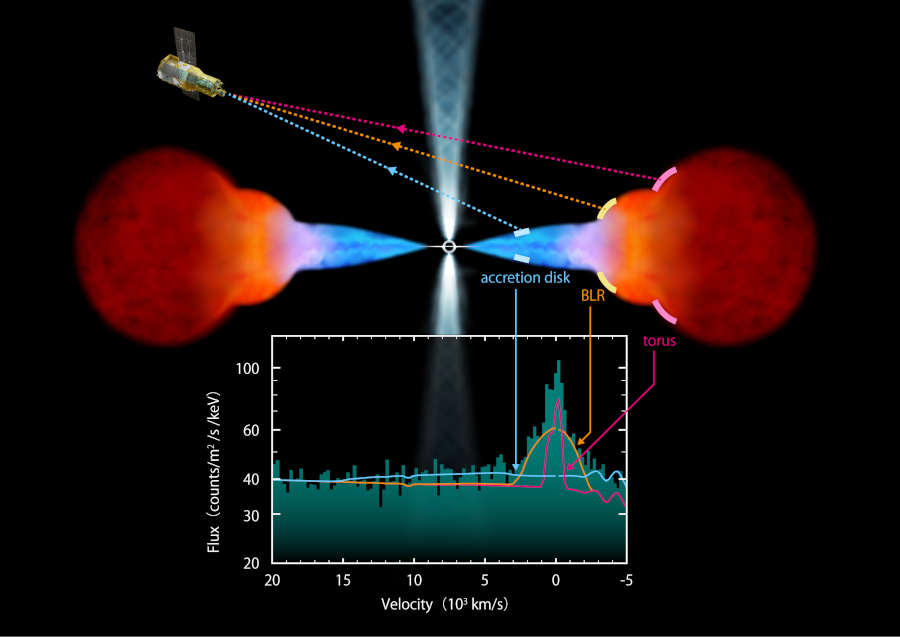
 Credit: JAXA
Credit: JAXA
In the Vicinity of a Supermassive Black Hole
Actively accreting supermassive black holes at the centers of galaxies are a primary driver of how galaxies, and the Universe itself, grow and evolve. The galaxy NGC 4151 is one of the closest active galaxies to our own Milky Way. Like the Milky Way, NGC 4151 is also a spiral galaxy, but unlike the Milky Way, NGC 4151 hosts a supermassive black hole near the galactic center, a black hole that is actively swallowing about an earth's mass of nearby gas and dust every minute from a torus of matter that surrounds it, producing jets of charged particles and hot gas, as illustrated above. Just before this matter spirals down into the black hole, past the event horizon never to be seen again, it produces an outpouring of X-radiation. Studying the X-ray emission from atoms in the region around the black hole is an excellent way to learn about the feeding habits of black holes, and to understand how thay grow. These atoms have characteristic signatures revealed as bumps of emission at certain X-ray energies. The inset above shows a high-resolution X-ray spectrum of NGC 4151 from the Resolve instrument on the X-ray Imaging and Spectroscopy Mission (XRISM, a joint collaboration between the Japanese Aerosapce Exploration Agency, or JAXA, NASA, and the European Space Agency). The X-ray spectrum highlights emission from iron atoms which are irradiated by a nearby source of X-rays and which glow at a particular X-ray energy. Resolve's strength is its ability to measure extremely precisely the energy of individual X-ray photons that fall upon it. Because the width of a X-ray emission from specific atoms depends on the motion of those atoms due to the Doppler Effect, the precise measures of the shapes of these emission lines means we can actually determine the precise velocity of these atoms relative to us, and how they are arranged around the black hole. The illustration also shows the expected line of sight of XRISM to the tilted torus of gas around the supermassive black hole. The blue-colored region represents material in the black hole's accretion disk, the orange region represents material with the largest spread in velocity, and the red region represents material in the torus of gas around the entire system. Analysis of the Resolve spectrum shows the emitting material moves at velocities of up to ±3000 km/s (an astonishing six million miles per hour) and that the donut-shaped "torus" around the black hole lies at a distance of approximately 0.1 light-years from the black hole.
Published: September 23, 2024
<
HEA Dictionary ● Archive
● Search HEAPOW
● Other Languages
● HEAPOW on Facebook
● Download all Images
● Education ● HEAD
>

Each week the HEASARC
brings you new, exciting and beautiful images from X-ray and Gamma ray
astronomy. Check back each week and be sure to check out the HEAPOW archive!
Page Author: Dr. Michael F. Corcoran
Last modified Monday, 30-Sep-2024 11:57:30 EDT


